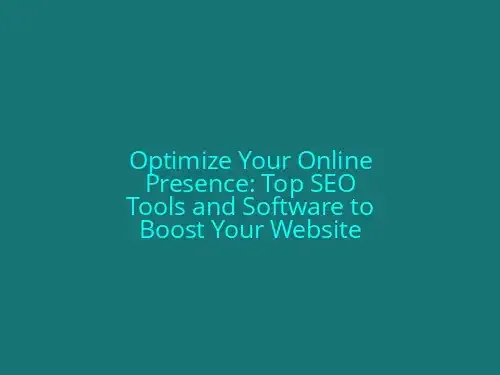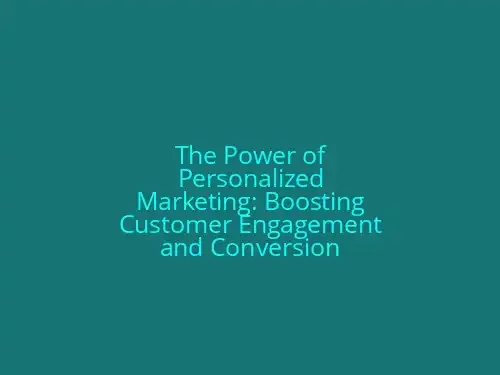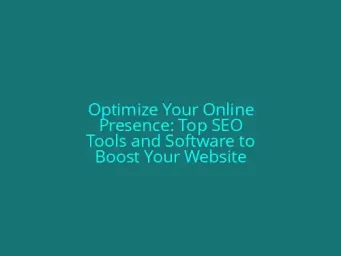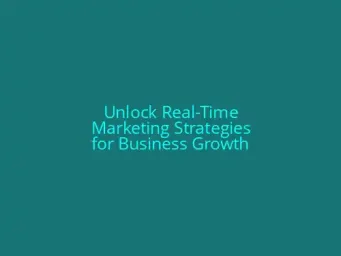
Optimize Your Online Presence: Top SEO Tools and Software to Boost Your Website
**The Ultimate Guide to SEO Tools and Software: Boost Your Online Presence**\n**Introduction**\n===============\nSearch Engine Optimization (SEO) is crucial for any business looking to establish a strong online presence. The right tools and software can significantly enhance SEO efforts, driving more traffic and conversions to your website. In this article, we will explore the world of SEO tools and software, discussing their role in optimizing your online presence.\n**Understanding SEO Tools and Software**\n=====================================\nSEO tools and software are designed to assist you in optimizing your website for search engines. These tools can perform various functions such as keyword research, on-page optimization, and competitor analysis. By using the right tools, you can improve your websites visibility and ranking on search engines like Google.\n### Top SEO Tools and Software for Keyword Research\n---------------------------------------------------\nKeyword research is a crucial step in SEO. Here are some of the best tools for keyword research:\n- **Infinite Suggest**: This tool provides a comprehensive list of related keywords based on your search query.\n- **SEORCH**: This tool offers advanced keyword research features, including suggestions of long-tail keywords.\n- **Sitechecker**: This tool helps you analyze your websites SEO performance and provides suggestions for improvement.\n- **Keywords Everywhere**: This tool offers a browser extension that shows keyword metrics and suggestions directly on Google search results.\n### Best Practices for Incorporating SEO in Your Writing\n---------------------------------------------------------\n### Optimizing Your Content for Search Engines\n---------------------------------------------------\nOn-page SEO elements such as page titles, meta descriptions, and headings are crucial for search engine ranking. Here are some key elements to focus on:\n- **Page Titles**: These should accurately describe your content and include target keywords.\n- **Meta Descriptions**: These should summarize your content and include target keywords.\n- **Headings**: These should properly structure your content and include target keywords.\n- **Category Descriptions**: These should accurately describe your content and include target keywords.\n- **Internal Linking**: This helps search engines understand your contents hierarchy and relevance.\n### The Role of SEO Software in Content Optimization\n----------------------------------------------------\nSEO software can help with content optimization by providing insights into keyword usage and suggesting alternative phrases. Here are some key features to look for:\n- **Content Analysis**: This tool analyzes your content for relevance and suggests improvements.\n- **Keyword Research**: This tool helps you identify relevant keywords for your content.\n- **Content Suggestions**: This tool provides suggestions for alternative phrases and keywords.\n### Conclusion\n----------\n### Additional Tips and Resources\n------------------------------------\nFor a comprehensive guide to SEO tools and software, please refer to the following resources:\n- **SEMrush**: A comprehensive SEO toolset with features like keyword research, competitor analysis, and technical SEO audits.\n- **Moz**: A well-known SEO toolset with features like keyword research, link building, and technical SEO audits.\n- **Ahrefs**: A comprehensive SEO toolset with features like keyword research, competitor analysis, and technical SEO audits.\nBy incorporating the right SEO tools and software into your strategy, you can significantly enhance your online presence and drive more traffic and conversions to your website.### Best Practices for Incorporating SEO in Your Writing\n Content quality and relevance are crucial elements in search engine optimization (SEO). To create high-quality, SEO-friendly content, use tools like Answer The Public and Wikipedia to generate topic ideas. Answer The Public offers suggestions based on real user queries, and Wikipedia provides extensive information on various topics, which can help in creating informative and well-researched content.\nWhen writing SEO-friendly content, ensure it includes essential on-page elements:\n- **Page titles**: Clearly define the title of your page using relevant keywords.\n- **Meta descriptions**: Write concise, descriptive summaries of your content.\n- **Headlines**: Use attention-grabbing headlines that highlight key points.\n- **Category descriptions**: Provide detailed descriptions of your categories.\nInternal linking is also vital. It helps search engines understand the structure of your website and improves user navigation. Link relevant pages within your content to enhance user experience and SEO performance.\nAdditionally, use tools like MozBar to quickly analyze and optimize your content. MozBar provides SEO audits, keyword suggestions, and competitor analysis, making it valuable for refining your SEO strategy.\nBy following these best practices and leveraging the right tools, you can effectively incorporate SEO into your writing and improve your online presence.\nKeywords to include: SEO writing, content quality, content relevance, Answer The Public, Wikipedia, page titles, meta descriptions, headlines, category descriptions, internal linking, MozBar.**Section 3: Top SEO Tools and Software for Keyword Research**\nKeyword research is a crucial part of SEO as it helps identify relevant and high-traffic keywords to target in your content. Here are some top SEO tools and software for keyword research:\n1. **Infinite Suggest**: Infinite Suggest is a powerful keyword research tool that provides a vast amount of keyword suggestions based on your search query. It also offers a free version and a paid version with additional features.\n2. **SEORCH**: SEORCH is another popular keyword research tool that offers a comprehensive set of features including keyword suggestions, competitor analysis, and content optimization tips. It also provides a free trial and a paid version with advanced features.\n3. **Sitechecker**: Sitechecker is a comprehensive SEO tool that includes keyword research, competitor analysis, and technical SEO audits. It offers a free version and a paid version with advanced features.\n4. **Keywords Everywhere**: Keywords Everywhere is a browser extension that provides keyword suggestions and competitor analysis. It also offers a free version and a paid version with advanced features.\nThese tools are highly effective in helping you generate a list of relevant and high-traffic keywords for your SEO efforts. By using these tools, you can optimize your content for better search engine rankings and drive more organic traffic to your website.\n---\n**Conclusion**\nIn conclusion, SEO tools and software play a vital role in enhancing your online presence. From keyword research to content optimization, these tools help streamline your SEO efforts and improve your sites visibility in search engine results. By choosing the right tools and optimizing your content effectively, you can achieve higher search engine rankings, drive more organic traffic, and ultimately grow your business.### Optimizing Your Content for Search Engines\n#### On-Page SEO Elements\n1. **Page Titles**: Ensure your page titles accurately reflect the content and are both descriptive and attention-grabbing. This helps search engines understand the content and rank it accordingly.\n2. **Meta Descriptions**: Use meta descriptions to provide a concise summary of your content, especially if its a short article or blog post. This helps users and search engines understand the content quickly.\n3. **Headlines**: Use clear and concise headings (H2-H6) throughout your content to break it up and indicate the hierarchy of information. This helps both users and search engines understand the structure and content.\n4. **Category Descriptions**: Use category descriptions to provide a brief summary of the category or topic. This helps users quickly find related content and search engines understand the contents context.\n#### Internal Linking\n1. **Benefits**: Internal linking helps users navigate your website by providing relevant links to related content. This also helps search engines understand the sites structure and content relationships.\n2. **Best Practices**: Use descriptive anchor text for your links, and avoid over-linking or linking to irrelevant content. This ensures that both users and search engines can quickly understand the context and relevance of the linked content.\n3. **Example**: Use a sentence or phrase from the linked content as the anchor text, and link to a specific section or page. This makes it clear what the link is about and helps both users and search engines understand the content relevance.\nBy incorporating these on-page SEO elements and internal linking strategies, you can significantly improve the visibility and ranking of your content. This ensures that your content is both user-friendly and optimized for search engines, enhancing your online presence and driving more organic traffic to your site.
read more →
Unlock Real-Time Marketing Strategies for Business Growth
**Introduction**\n----------------\nReal-time marketing is a powerful strategy that allows businesses to respond swiftly to their customers’ needs and preferences. This dynamic approach enhances user experience, fosters brand loyalty, and drives growth. In today’s fast-paced digital landscape, staying connected with your audience is crucial. Real-time marketing empowers businesses to adapt quickly to trends and events, strengthening their competitive edge and customer engagement.\n### Importance of Real-Time Marketing\nReal-time marketing is essential for businesses to stay relevant and competitive in the market. It offers several benefits, including increased customer engagement, improved conversion rates, and enhanced brand visibility. By being responsive to current events and trends, businesses can build strong relationships with their audience and establish themselves as thought leaders in their industry.\n### Thesis Statement\n--------------------\nReal-time marketing empowers businesses to respond actively to customer needs and preferences, enhancing user experience and driving growth. This approach is vital for companies to stay ahead in the competitive digital landscape and capitalize on opportunities as they arise.\n### Brief Overview of Real-Time Marketing\nReal-time marketing involves creating and delivering marketing content or campaigns in response to current events, trends, or customer behaviors. This approach focuses on timeliness and relevance, ensuring messages are tailored to the audiences interests and needs. Examples of successful real-time marketing include the ALS Ice Bucket Challenge and Taco Bells enthusiastic responses to customer interactions on social media.\n### Key Characteristics of Real-Time Marketing\nKey characteristics of real-time marketing include:\n- **Immediacy**: Responding quickly to current events and trends.\n- **Adaptability**: Adjusting strategies based on user reactions and feedback.\n- **Relevance**: Creating content that resonates with the audiences interests and needs.\n### Examples of Real-Time Marketing in Action\nExamples of real-time marketing include:\n- **ALS Ice Bucket Challenge**: A global phenomenon where companies and celebrities participated, raising awareness and funds for ALS research.\n- **INBOUND**: A three-day event attracting thousands of business professionals, with attendees actively engaging on social media while attending keynotes and breakout sessions.\n- **Taco Bell**: Known for their prompt and personalized responses to customer messages on social media, fostering community engagement and loyalty.\n### Importance of Real-Time Marketing\nReal-time marketing is crucial for businesses to stay competitive, as it:\n- **Enhances Customer Engagement**\n- **Improves Conversion Rates**\n- **Boosts Brand Visibility**\n### Thesis Statement Recap\n-------------------------\nReal-time marketing empowers businesses to respond actively to customer needs and preferences, enhancing user experience and driving growth. By implementing this strategy, companies can stay ahead in the competitive digital landscape and capitalize on opportunities as they arise.\nThis introduction provides a solid foundation for understanding the importance and benefits of real-time marketing. It sets the stage for exploring the key elements and applications of real-time marketing in the subsequent sections of the article.**What is Real-time Marketing?**\nReal-time marketing refers to the practice of creating and delivering marketing content or campaigns in response to current events, trends, or customer behaviors. This approach is designed to engage with the audience in the present moment, making it highly relevant and effective in capturing attention. Key characteristics of real-time marketing include immediacy, adaptability, and the ability to analyze and react to customer feedback quickly.\nReal-time marketing involves using data and analytics to predict customer needs and preferences, allowing businesses to react in real-time. This can be seen in action through various strategies such as social media campaigns, email marketing, and live chats.\nFor instance, a company could respond to a trending meme by creating a humorous post on social media, capitalizing on the current conversation and increasing brand visibility. Similarly, a brand could use real-time analytics to identify customer pain points and then create targeted content to address those needs.\nBy leveraging real-time marketing, businesses can enhance customer engagement, improve conversion rates, and increase brand visibility. Effective real-time marketing strategies involve monitoring user reactions and adjusting strategies accordingly, utilizing real-time analytics and flexible processes to stay ahead of the competition. Examples of successful real-time marketing tools and platforms include Sprout Social and Google Alerts, which provide marketers with the necessary data to inform their strategies and react to customer feedback.\nOverall, real-time marketing is a vital aspect of modern business, enabling companies to respond actively to customer needs and preferences, enhancing user experience, and driving growth.**Benefits of Real-time Marketing** \nReal-time marketing offers numerous benefits for businesses. Here are some of the most significant advantages:\n### Enhanced Customer Engagement\nReal-time marketing helps create a continuous dialogue with customers, keeping them engaged and interested in your brand. This engagement drives loyalty and retains existing customers.\n### Improved Conversion Rates\nBy responding to customer needs and trends instantly, your marketing efforts can increase the chances of conversions. This personalization resonates with customers, leading to higher conversion rates.\n### Increased Brand Visibility\nReal-time marketing helps you stay relevant in the ever-changing market landscape, keeping your brand top-of-mind for your audience.\n### Examples of Successful Real-time Marketing Strategies\n- **Oreos Super Bowl Blackout**: Oreo anticipated the blackout during the Super Bowl and was ready to publish planned content, demonstrating their adaptability and quick response to a developing situation.\n- **Taco Bells Social Media**: Taco Bells strategy involves responding to customers on social media almost twice an hour every day, showcasing their commitment to real-time engagement and customer interaction.\nThese examples illustrate how real-time marketing can elevate a brands presence and customer interaction in the digital world. By incorporating these strategies into your marketing plan, you can stay ahead of the competition and maximize your marketing impact.**Implementing Real-time Marketing Strategies**\nImplementing real-time marketing strategies requires a multi-faceted approach. Here are the key steps to ensure the success of your real-time marketing initiatives:\n**1. Identify Key Areas for Impact**\nFocus on areas where real-time engagement can have the greatest impact. This may include enhancing customer experiences, improving conversion rates, or increasing brand visibility.\n**2. Monitor User Reactions and Adjust Strategies**\nContinuous monitoring of user reactions is crucial. Analyze performance metrics and adjust your strategies accordingly to optimize results.\n**3. Utilize Real-time Analytics and Flexible Processes**\nLeverage real-time analytics to make data-driven decisions. Ensure your processes are flexible enough to adapt to changing customer needs and market trends.\n**4. Examples of Effective Real-time Marketing Tools and Platforms**\nSeveral tools and platforms can help you implement real-time marketing strategies effectively. For instance, tools like SAS, Intel, and Accenture provide robust analytics capabilities to support real-time marketing efforts.\nBy following these steps and leveraging the right tools, you can create a robust real-time marketing strategy that drives growth and enhances customer experiences.
read more →
The Power of Personalized Marketing: Boosting Customer Engagement and Conversion
**Title:** The Power of Personalized Marketing: Boosting Customer Engagement and Conversion\n**Meta Description:** Discover how personalized marketing can revolutionize your customer experience. Learn effective strategies for tailoring content and offerings to individual customers, increasing conversion and loyalty.\n**Keywords:** Personalized Marketing, Target Audience, Customer Engagement, Conversion, Customer Loyalty\n### I. Introduction\nPersonalized marketing has become a vital tool for businesses seeking to create meaningful connections with their customers. In today’s digital landscape, tailored marketing efforts can significantly enhance customer engagement and conversion rates. This article will explore the importance of personalized marketing, its role in modern marketing strategies, and provide practical tips for implementing effective personalized marketing campaigns.\nPersonalized marketing involves using data and analytics to create content and experiences that resonate with individual customers. By understanding customer needs and preferences, businesses can deliver relevant messages, products, and services, fostering loyalty and driving conversions. In this comprehensive guide, we will delve into the benefits of personalized marketing, outline strategies for crafting targeted content, and discuss the key metrics to track for measuring success.\n**Definition of Personalized Marketing and its Role in Today’s Digital Landscape**\nPersonalized marketing is the strategic use of customer data and analytics to tailor marketing efforts to individual customers. This approach involves understanding customer demographics, browsing behavior, purchase history, and other relevant factors to deliver personalized experiences. The goal of personalized marketing is to create a seamless customer journey, increasing brand loyalty and conversion rates. As customers demand more personalized interactions, businesses must adapt to this shift or risk falling behind competitors.\n**Importance of Personalized Marketing**\nPersonalized marketing is crucial for several reasons:\n1. **Increased Customer Engagement**: Tailored content and messages foster deeper connections with customers, encouraging engagement and loyalty.\n2. **Improved Conversion Rates**: Personalized marketing helps customers find relevant products and services, leading to higher conversion rates.\n3. **Enhanced Customer Experience**: Personalized marketing ensures that customers receive relevant and useful information, enhancing their overall experience with a brand.\nBy incorporating personalized marketing into their strategies, businesses can create a competitive edge and drive long-term success.### II. Understanding the Customer\nUnderstanding the customer is crucial for successful personalized marketing. This involves analyzing customer data to gain insights into their preferences, behaviors, and needs. Here are some effective ways to segment your target audience and use demographics, browsing behavior, and purchase history to understand your customers:\n- **Customer Data Analysis**: Collect and analyze customer data through surveys, feedback forms, or direct interactions. This helps you identify patterns and preferences that can guide your marketing strategy.\n- **Effective Segmentation**: Segment your audience based on demographics, such as age, gender, and location. This helps you tailor content to specific groups and increases the relevance of your messages.\n- **Customer Insights**: Use data to understand customer behavior, including browsing patterns and purchase history. This information can be used to create targeted content and recommendations that match their needs.\nBy understanding your customers through data analysis and segmentation, you can create targeted content that resonates with their needs and desires. This leads to higher engagement rates and conversion rates, ultimately driving business growth.### III. Crafting Personalized Content\nCrafting personalized content is crucial for resonating with your target audience. This involves creating content that addresses the specific needs and desires of your customers. Here are some strategies to tailor your blog content to your target audience:\n1. **Conduct Audience Research**: Understand your audience by analyzing their past behavior, location, and language. This information helps you create relevant content that speaks to them. Implementing advanced segmentation strategies can be a game-changer in this department.\n2. **Choose the Right Keywords**: Select keywords that effectively target your message to your audience. For example, if you are selling ice cream in New York City, your keywords might be Where to find ice cream in New York City or How ice cream can benefit growing children.\n3. **Create Relevant Content**: Ensure that your content aligns with your audiences search intent. For instance, if users want to know more about New York City ice cream, generate content related to that topic. Knowing your audience helps you consider other issues like language and regional behaviors.\nBy incorporating these strategies, you can create content that is tailored to your audience, increasing engagement and conversion rates.### IV. Dynamic Content and Personalization Techniques\nDynamic content plays a vital role in personalized marketing. It involves using data to create tailored messages that resonate with individual customers. This approach enhances the customer experience, leading to higher engagement and conversion rates.\n#### Definition and Benefits of Dynamic Content\nDynamic content is a type of content that changes based on user interactions. This can include elements such as names, locations, or preferences. Dynamic content helps to create a more personal experience by addressing customers by their names, showing relevant offers, and providing product suggestions based on their purchase history and browsing behavior.\n#### Examples of Dynamic Content\nDynamic content can be seen in various industries. For instance, e-commerce websites use dynamic content to create personalized product recommendations and offer targeted promotions. Social media platforms, such as Facebook, use dynamic content to show users posts from friends and family that are more likely to interest them.\n#### Implementing Personalization Techniques in Blog Design and Content\nTo incorporate personalization techniques in blog design and content, businesses must leverage customer data effectively. This includes segmenting the target audience based on demographics, browsing behavior, and purchase history. Using this data, businesses can create personalized content that is both engaging and relevant to the customers needs.\nBy implementing dynamic content and personalization techniques, businesses can significantly improve customer engagement and conversion rates. This approach helps to create a more personal experience, leading to stronger customer loyalty and a competitive edge in the market.
read more →


